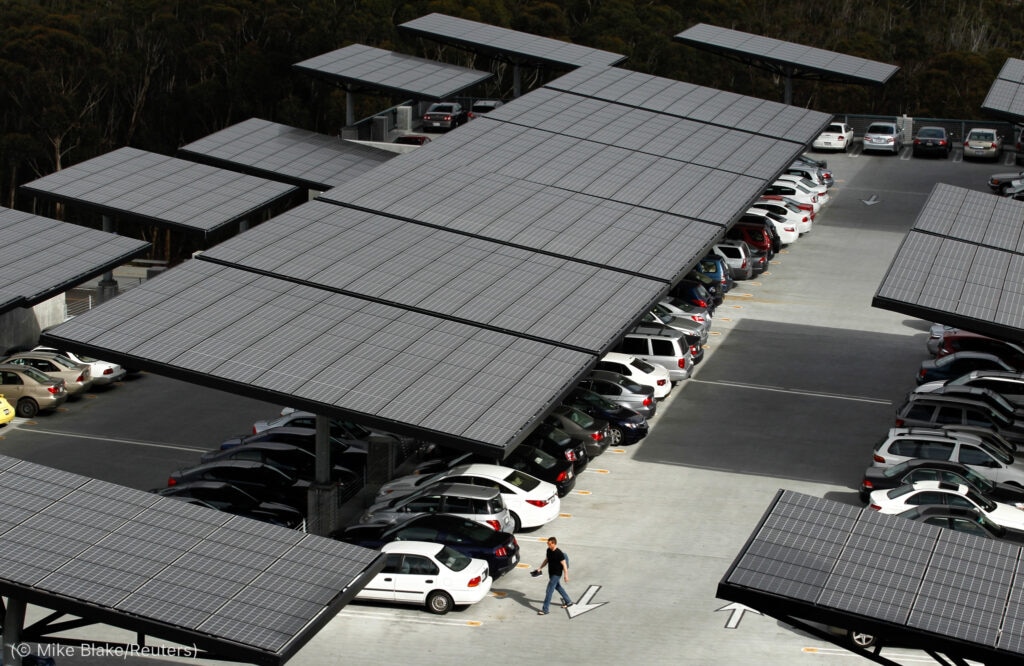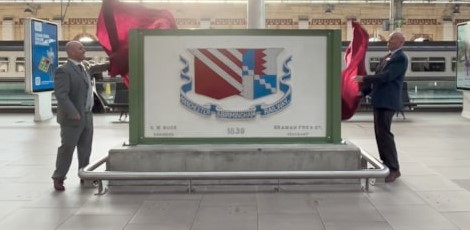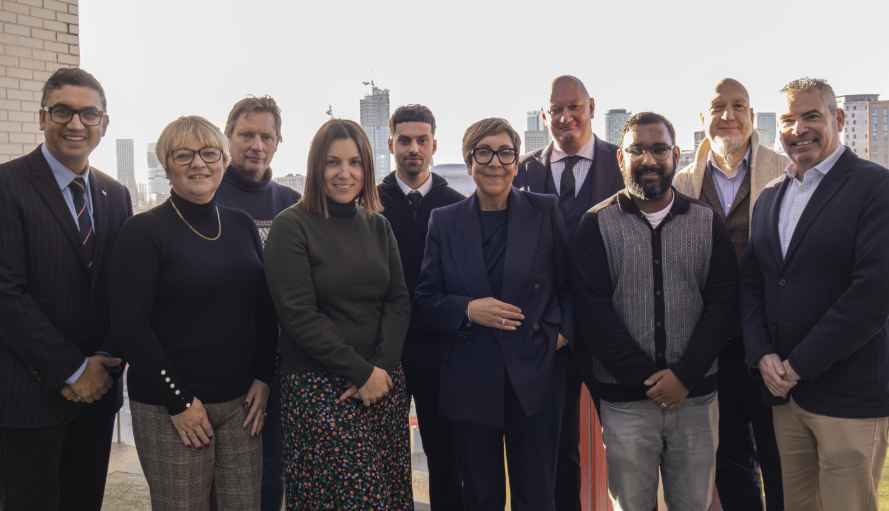This cool pavement installation in Phoenix was part of a 2021 pilot program. (Courtesy of City of Phoenix Street Transportation Department)
Asphalt, concrete and lack of tree coverage raise city temperatures. Roadways, roofs and other surfaces trap the sun’s UV rays and give off heat throughout the day and even into the night.
This trapped heat creates urban heat islands, areas where natural land cover is replaced by pavement, buildings and other surfaces that collect more heat than other areas.
Smart Surface technologies can help reduce the effects of the climate crisis by lowering urban temperatures.
Smart Surfaces are making their way onto streets, parking lots and roofs across the United States and soon, around the world.
According to the Smart Surfaces Coalition, a group of 40 national and international organizations trying to make urban centres more climate-resilient, the surfaces are technologies that mitigate rising temperatures caused by the climate crisis while strengthening urban resilience and saving money.
These include:
· Reflective coatings on roadways.
· Solar-panelled outdoor shade structures.
· Cool roofs that reflect heat off buildings.
· Green roofs and walls covered in vegetation.
· Porous pavements that absorb rainfall and replenish aquifers.
When extreme heat and urban heat islands meet, it is nearly impossible for parts of cities to reach lower temperatures during evening hours, which leads to an accumulation of heat during the day.
Smart Surfaces can help lower the temperatures at night. Roadways absorb heat during sunlight hours, so if reflective surfaces absorb less heat during the day, roadways won’t retain and radiate heat at night.
“Since black asphalts absorb 95% of the heat, urban heat islands are felt at nighttime and that’s when they’re slowly releasing the heat,” said Davis Koleas, the sustainability director of CoolSeal by GuardTop, a company that makes Smart Surfaces. “But cool pavements reflect anywhere from 35–40% of solar heat.”
Two different 2021 analyses — one in Stockton, California, and one in Baltimore — demonstrated that “citywide adoption of 12 Smart Surfaces strategies over 20 years would cut peak summer downtown temperature by almost 3 degrees Celsius, reduce city carbon dioxide emissions by more than 10% and have a benefit-cost ratio of more than 5-to-1,” said Jackson Becce of the Smart Surfaces Coalition.
He says a similar analysis is underway in Bhopal, India, to test the effectiveness of Smart Surfaces.
A recent pilot program by Arizona State University and the City of Phoenix Street Transportation Department and Office of Sustainability found reflective roadway coatings can reduce surface road temperatures by 10 degrees–15 degrees Fahrenheit. The coatings may lower the ambient air temperature as well, but this is harder to measure.
“We had great results,” said Ryan Stevens, an engineering manager with the City of Phoenix who was involved in the planning of the Cool Roadways Partnership across the city. “Even slight reductions in temperature compounded across an entire urbanized area can result in a really positive impact.”
Smart Surfaces are one technique that may help mitigate the negative effects of the climate crisis. Others include greening measures such as increased tree canopy, urban farms and public gardens.











